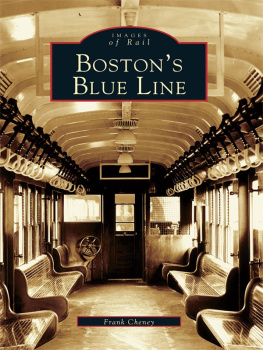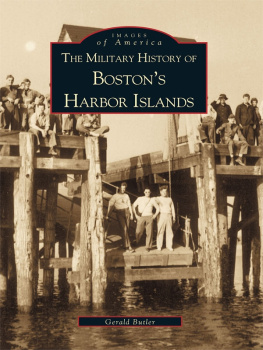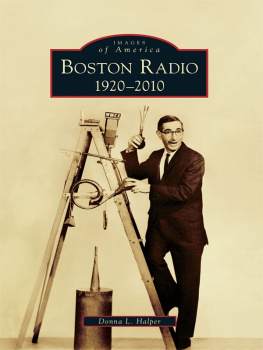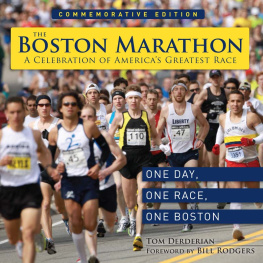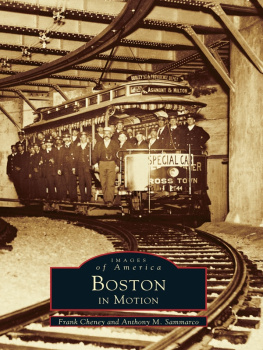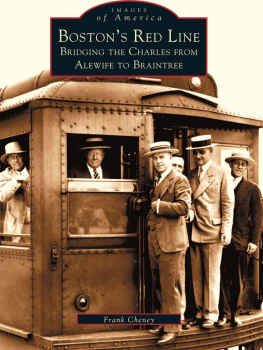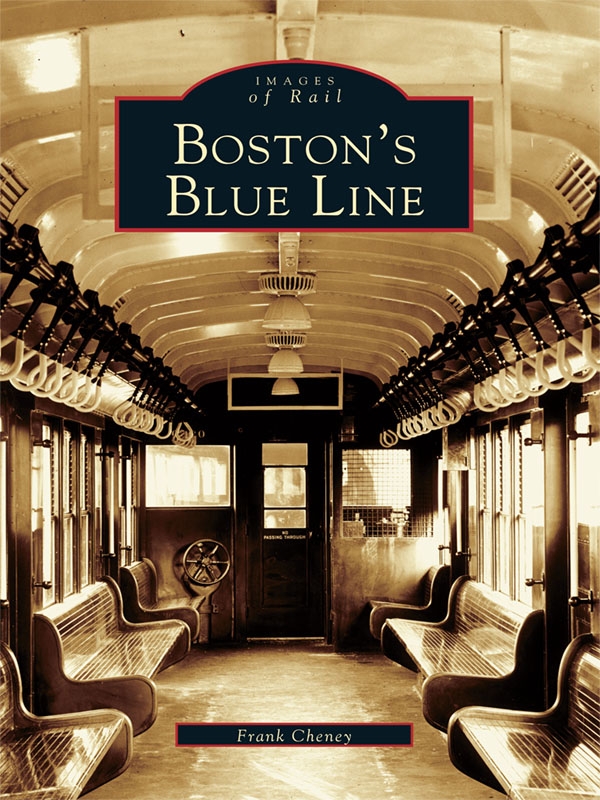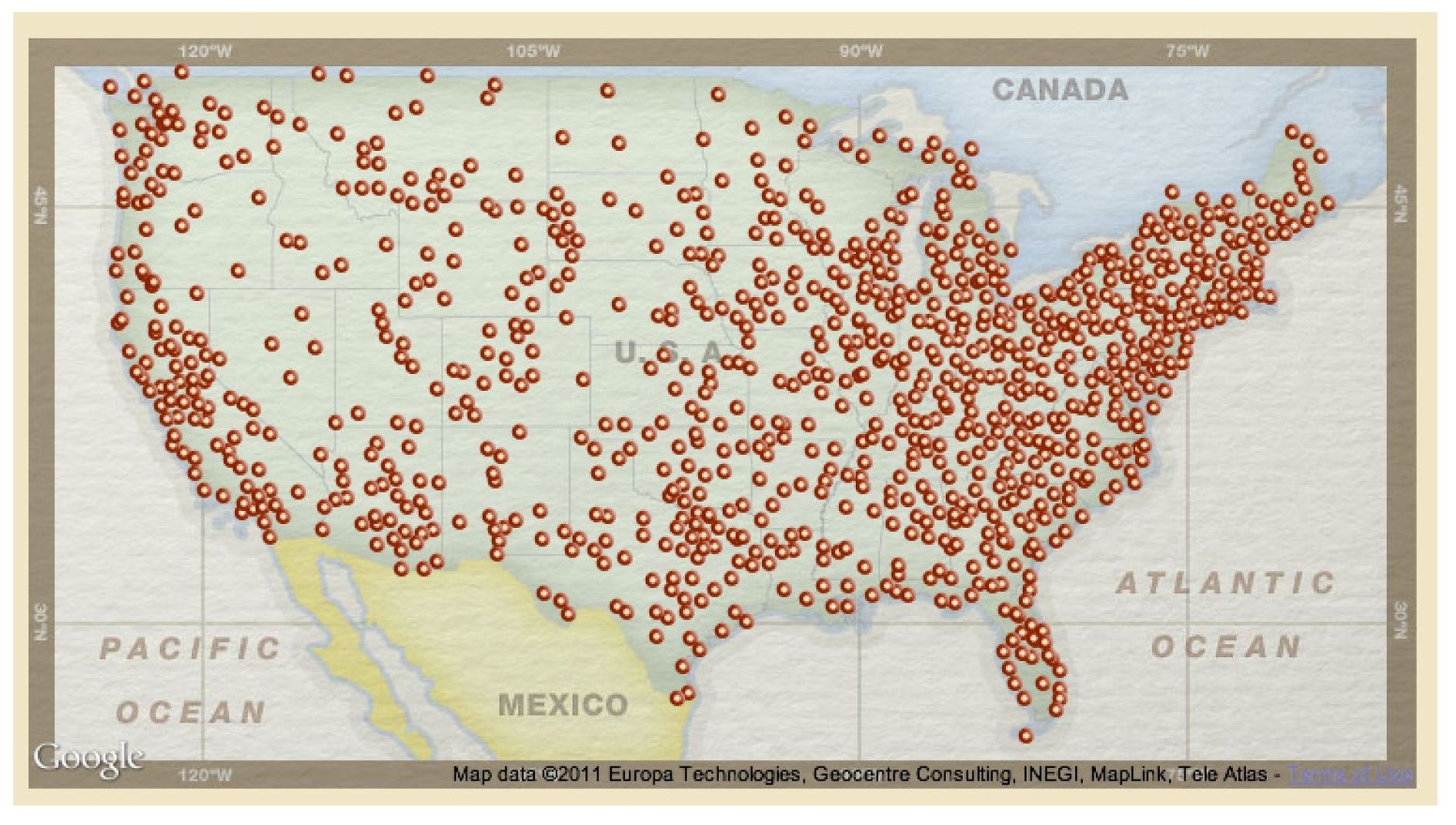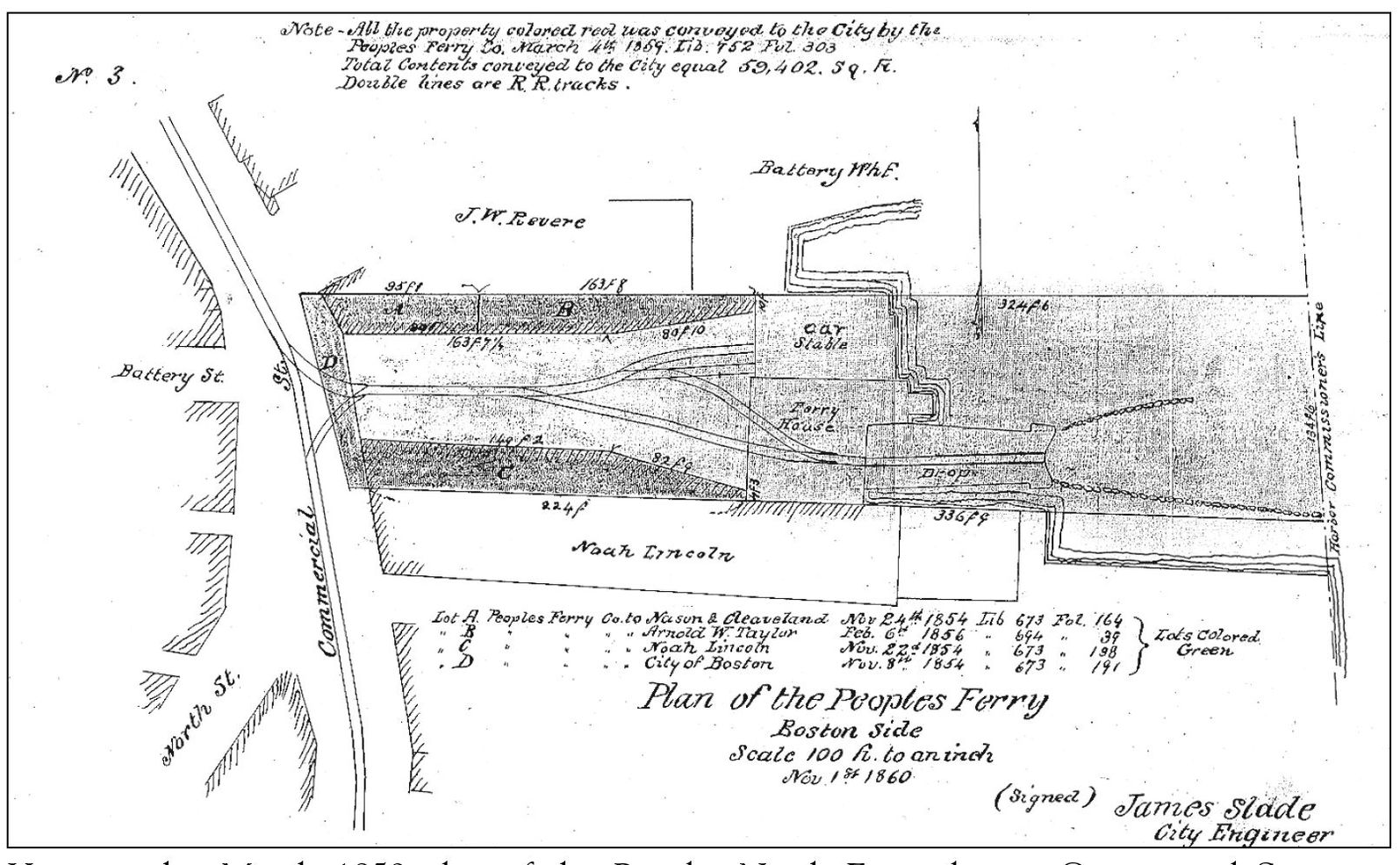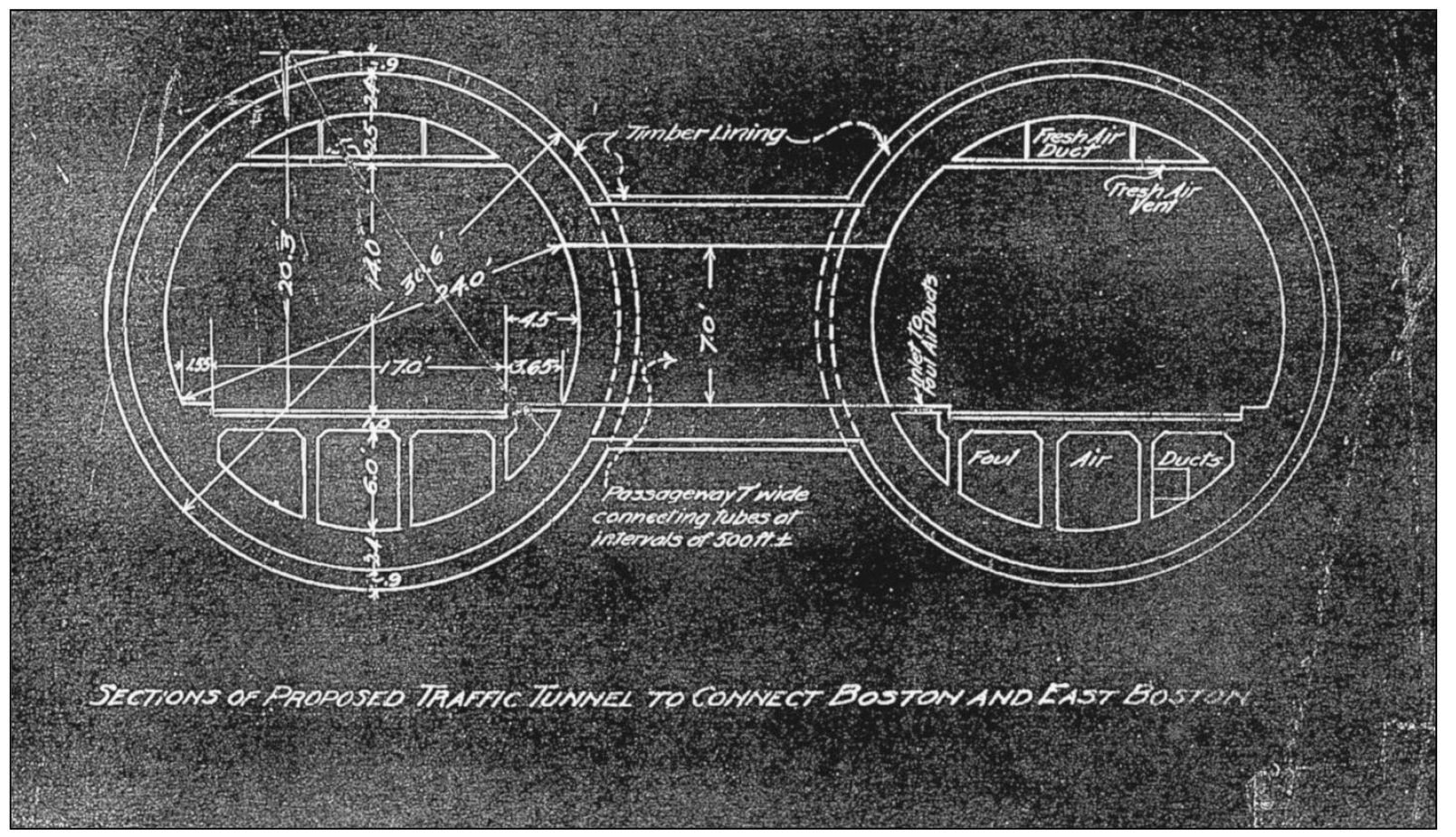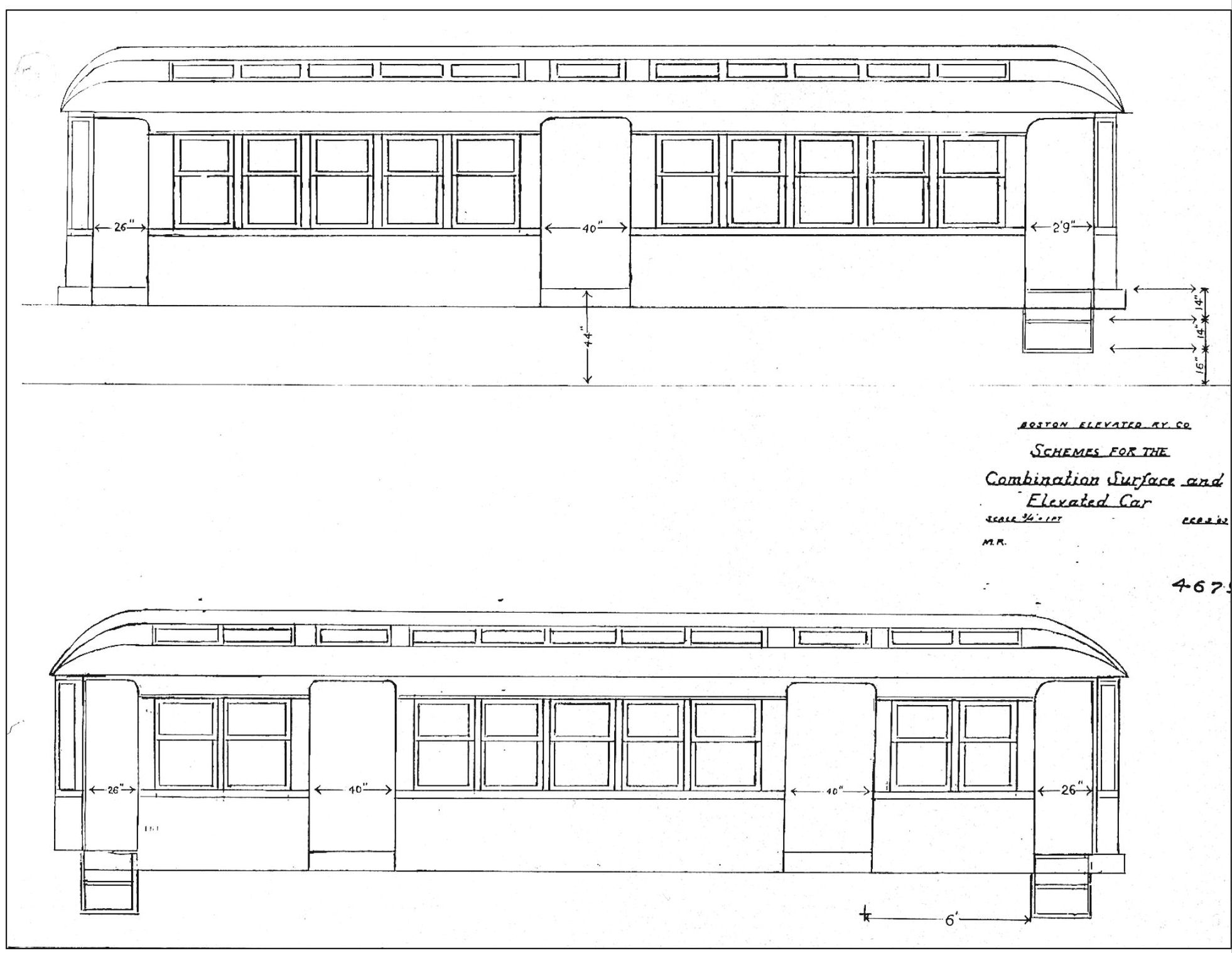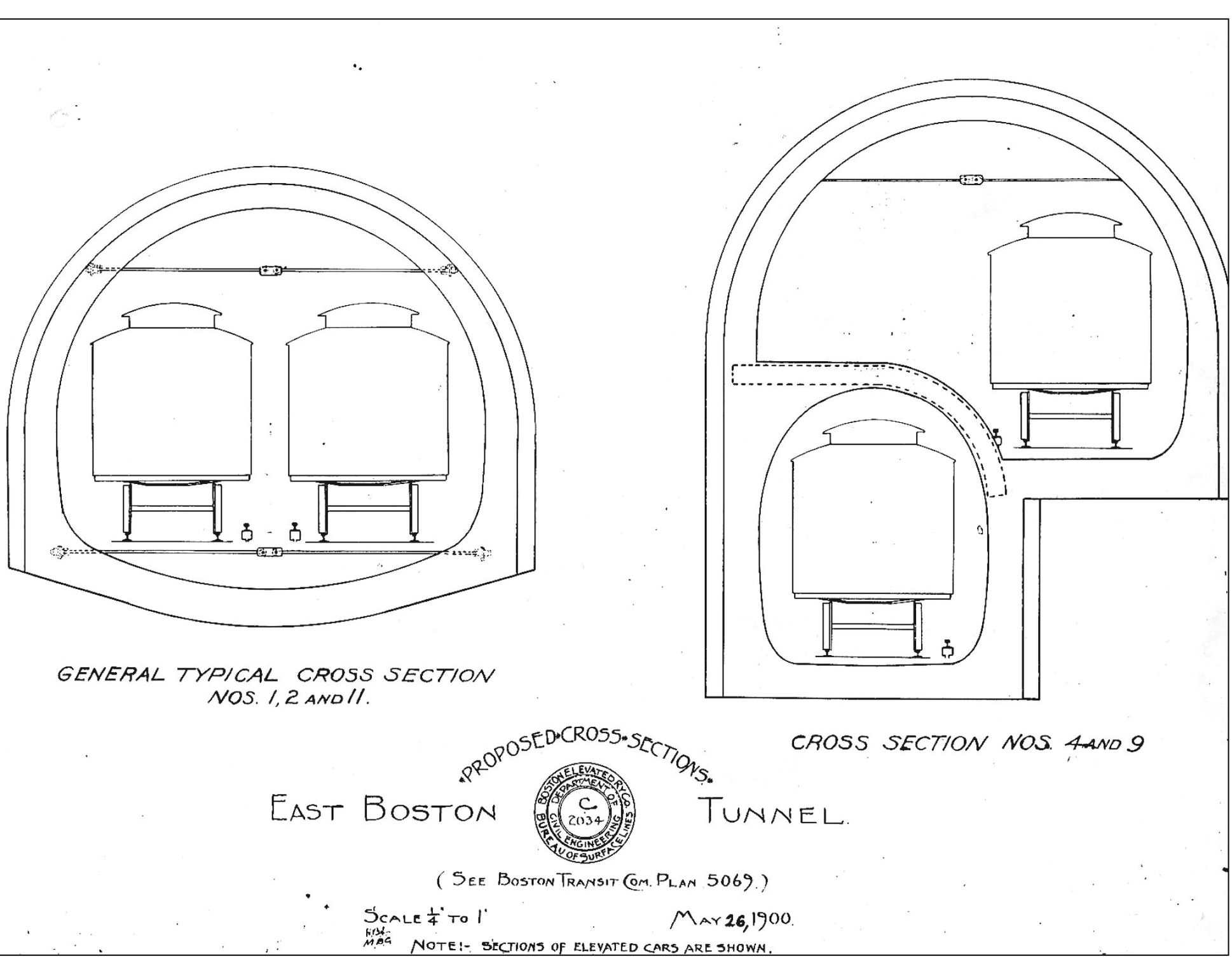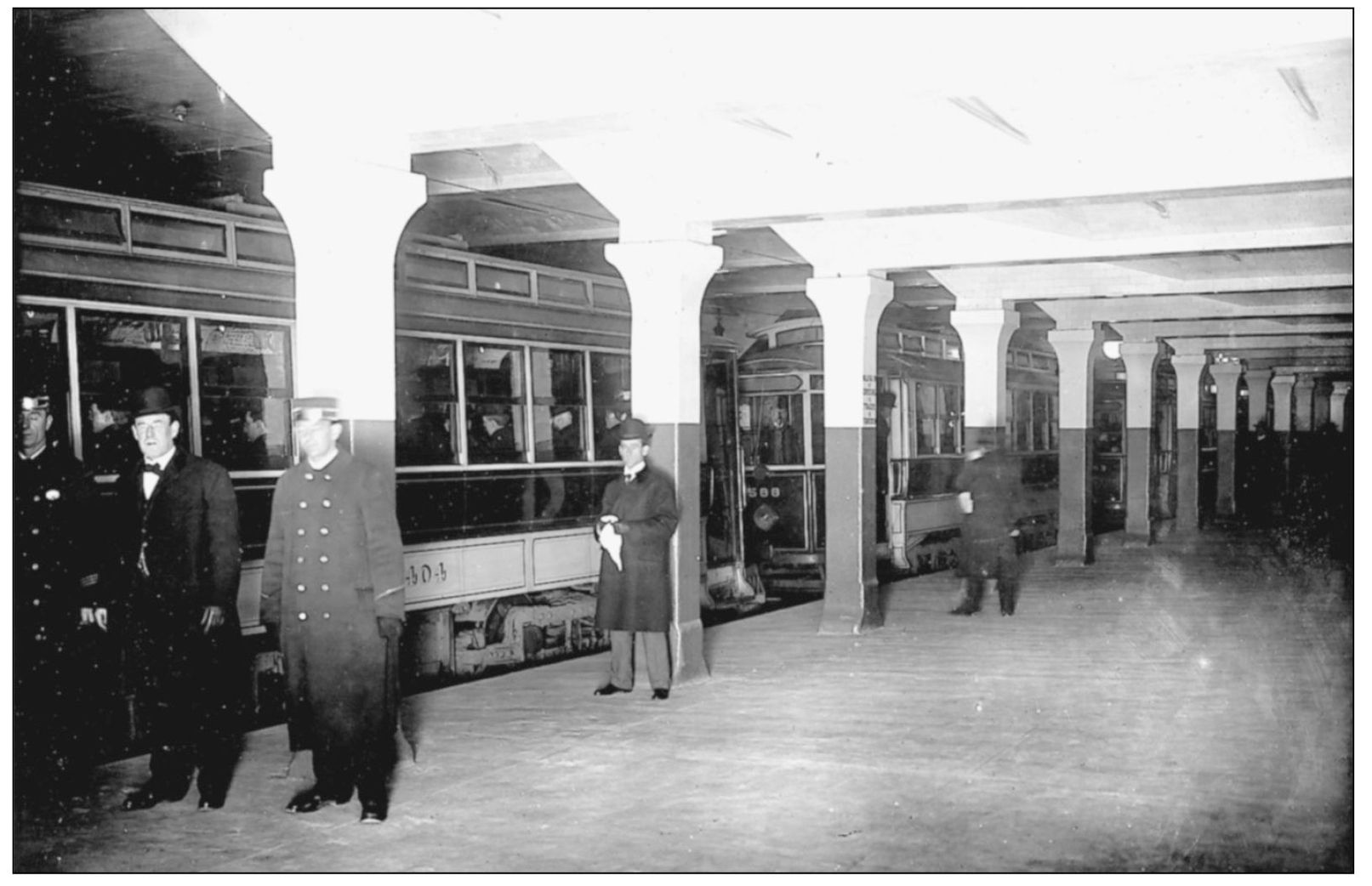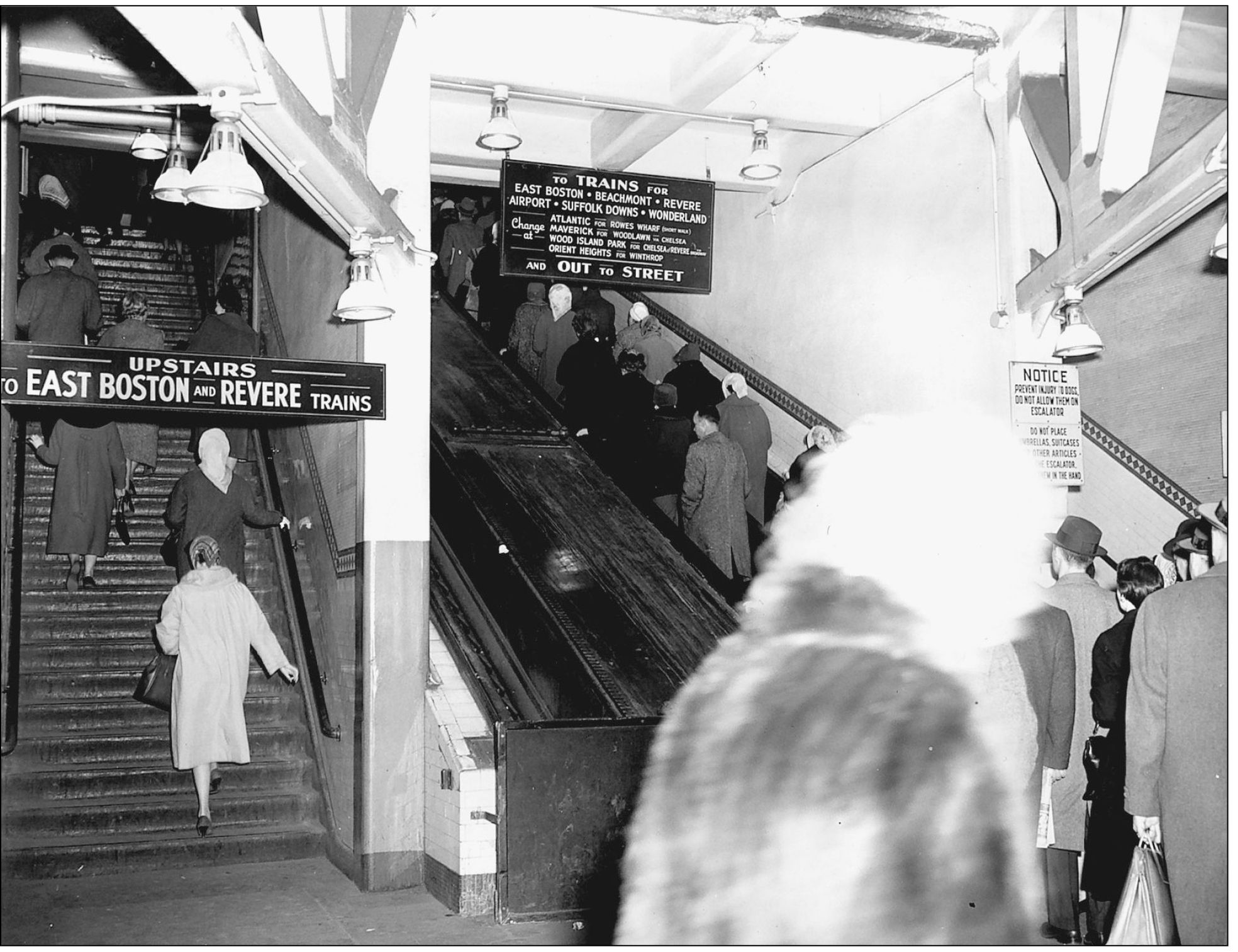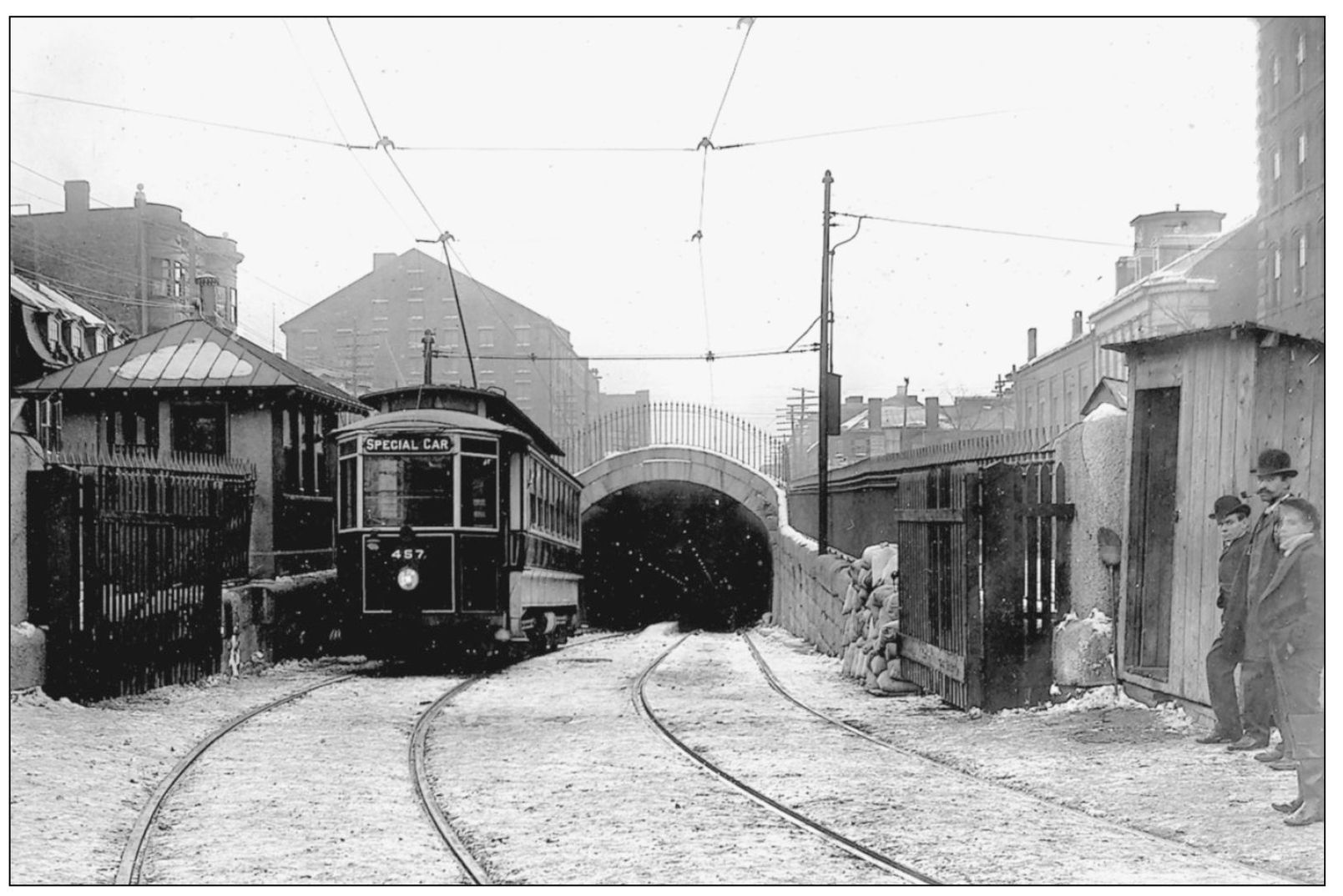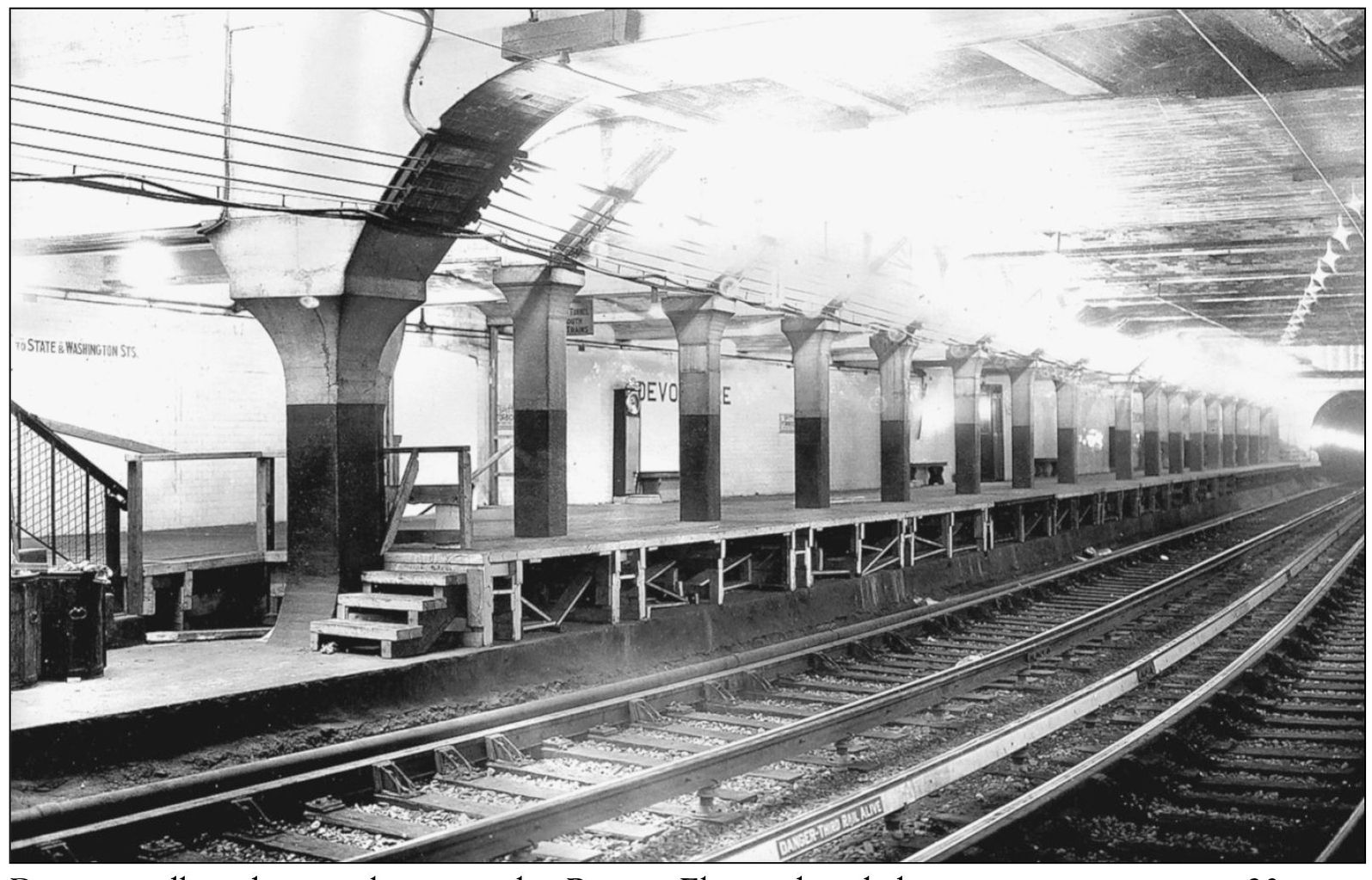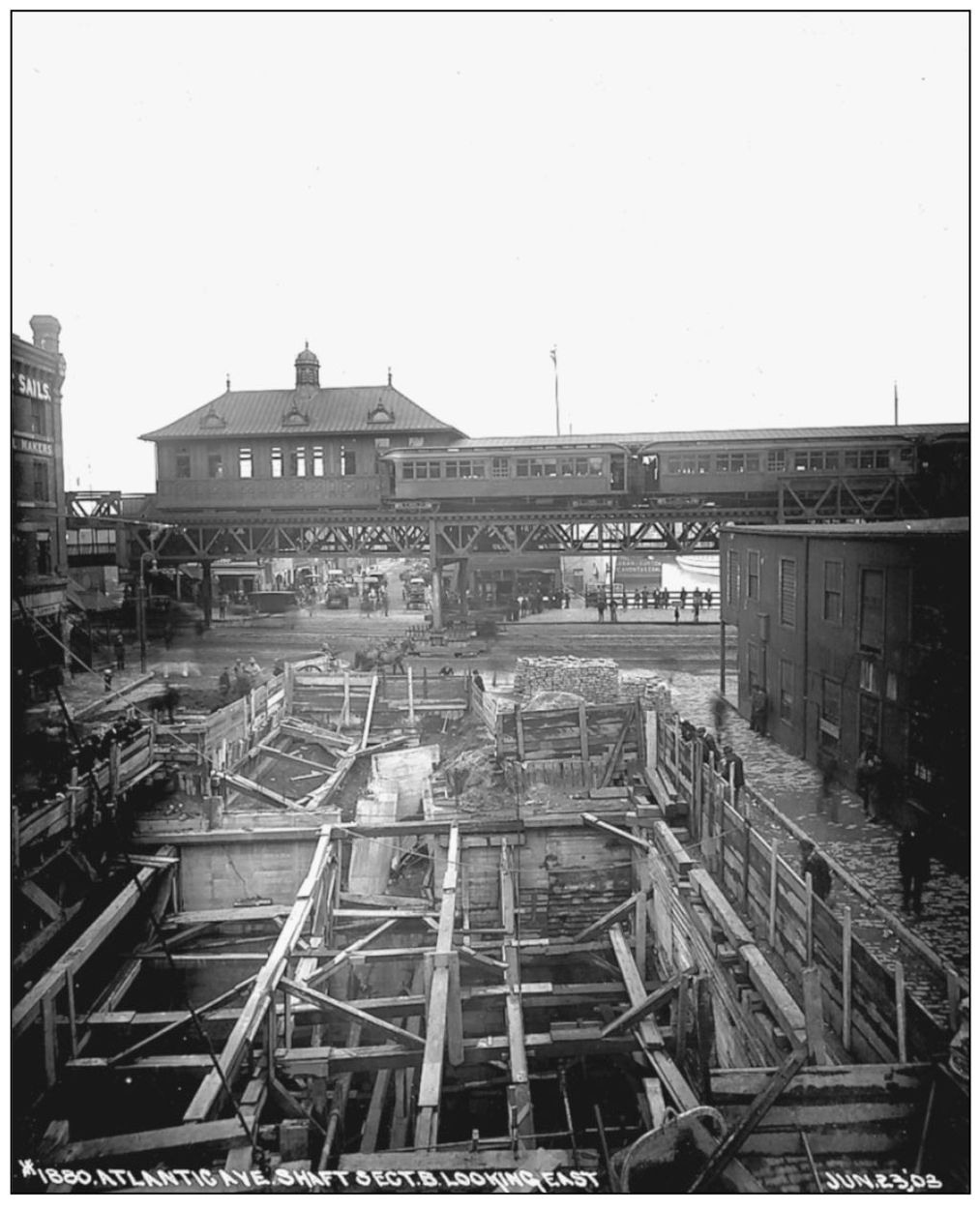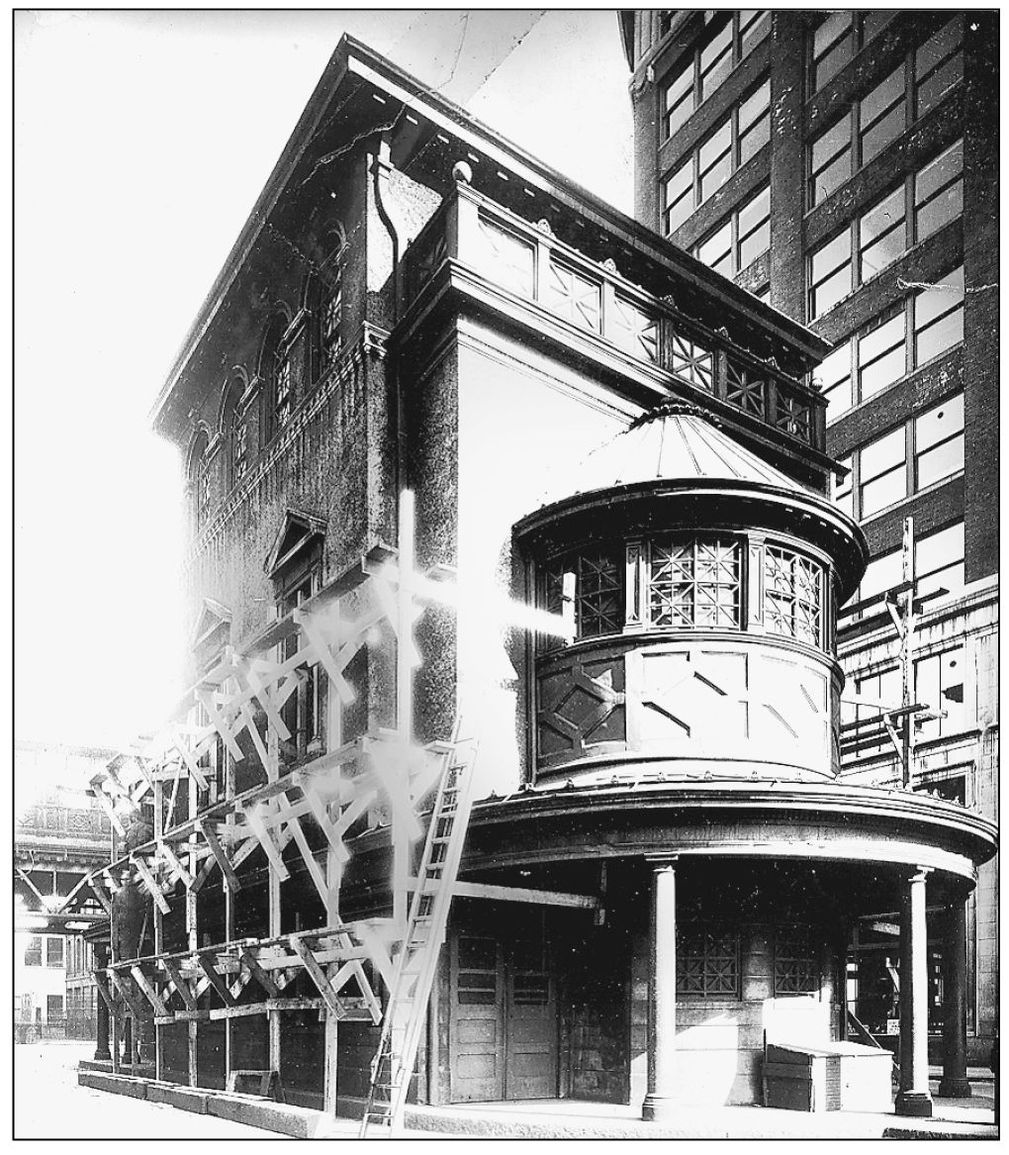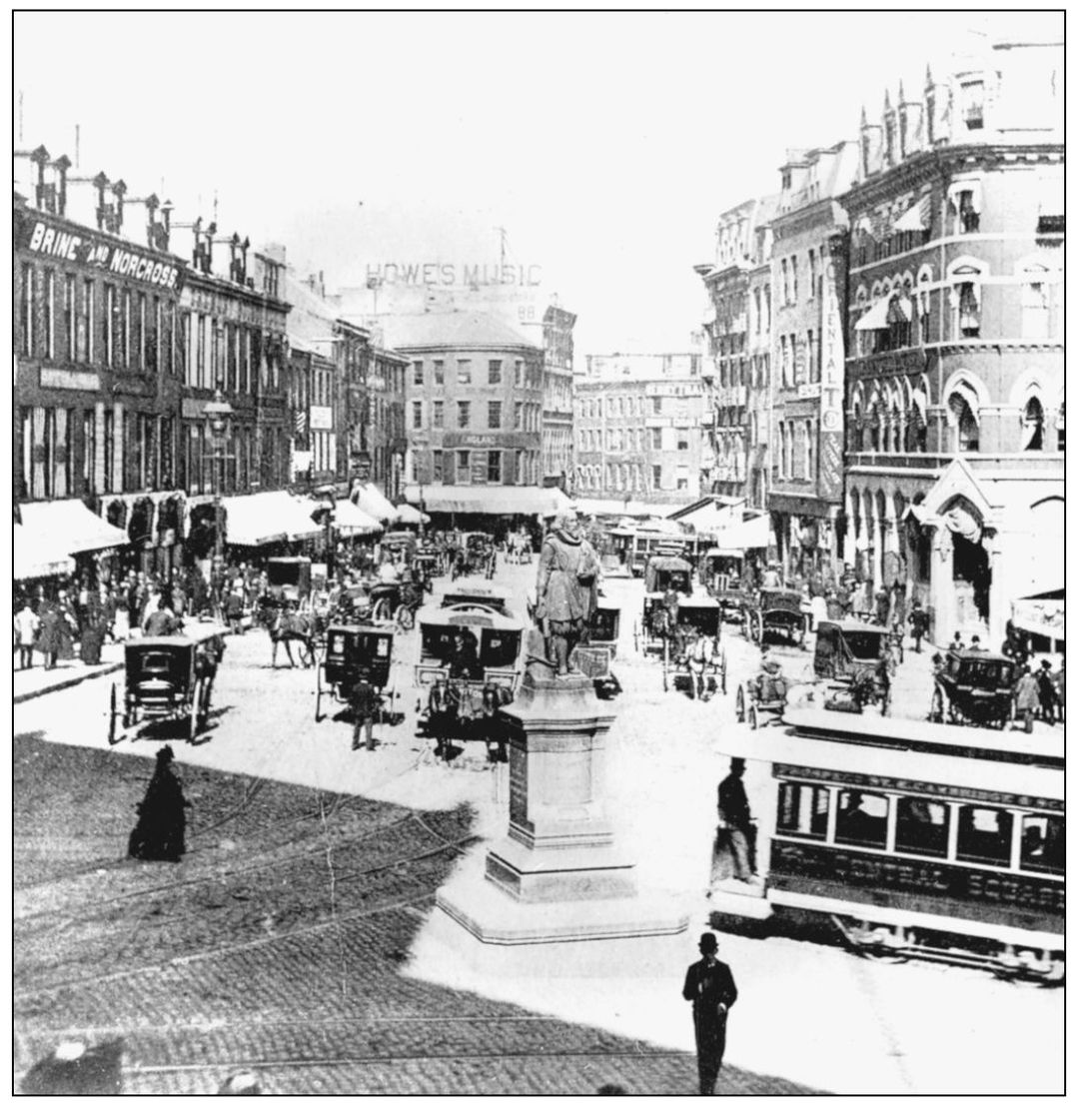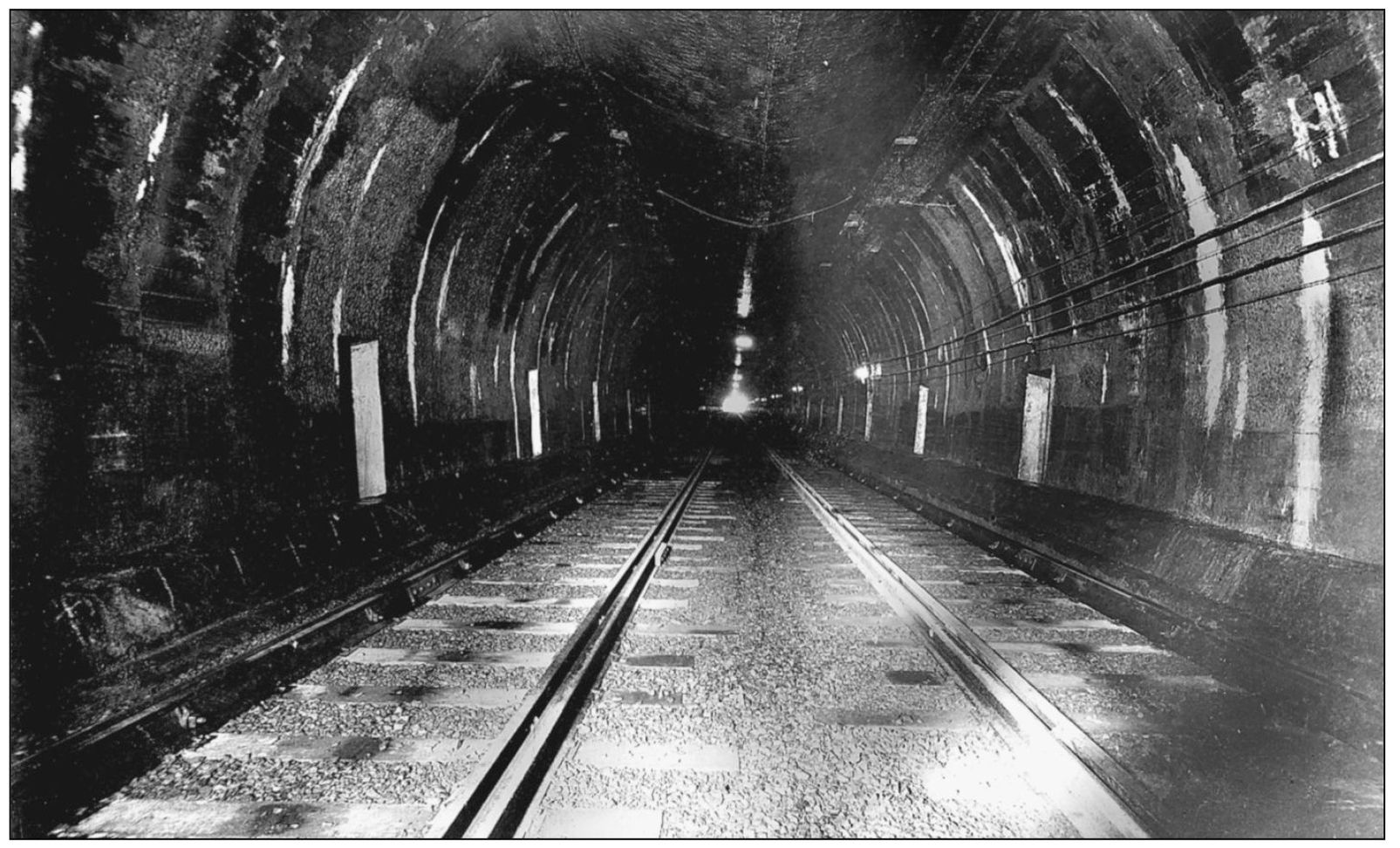One
CROSSING THE HARBOR
Here, in this March 1859 plan of the Peoples North Ferry slip on Commercial Street in downtown Boston, the tracks, car house , and loading ramp for the Suffolk Railroads horsecars are shown. The adjoining property and dock of Noah Lincoln became the site of the Boston Elevateds big Lincoln power station.
This faded 1875 drawing shows General Fosters proposed under-harbor wagon tunnel, consisting of twin iron tubes illuminated by gas. The project was dropped in 1880 for sanitary and technical reasons, and in the summer of 1934, the Sumner Tunnel opened for general traffic.
Leaving a foamy wake astern as she departs downtown Boston for East Boston on July 14, 1899, the ferry Ben Franklin is about to be passed by a Boston-bound ferry, seen in the background. The workmen in the foreground are making test borings for the new East Boston Tunnel, for which nine different locations were considered.
The early proposal to connect the planned Cambridge Elevated line to the new East Boston Tunnel required bi-level loading cars that could operate as both rapid-transit cars and surfacetrolley cars. Here is the February 1903 plan for such a car, which was quite different from the cars that were actually built.
This May 1900 engineering plan shows the East Boston Tunnel as outfitted for use by elevated trains on the planned Harvard SquareMaverick Square line. The plan was dropped as a result of continued heated disagreements between the Boston Elevated and the Boston Transit Commission.
Here on November 19, 1904, is the temporary Court Street terminal of the East Boston Tunnel, with Car No. 457 about to leave on a trial trip to East Boston. Note the tollbooth on the right, where exiting passengers paid a 1 toll to the city of Boston to offset the loss in revenue on the ferries.
A day prior to the opening of the East Boston Tunnel on December 29, 1904, special cars were run for the officials, employees, and families of the Boston Elevated and transit commission. This view was captured at Devonshire Street Station.
With the opening of the Washington Street Tunnel in November 1908, easy transfer for riders was provided between the State Street Station and the Devonshire Street Station of the East Boston Tunnel. This view was made on March 2, 1960, during the morning rush hour.
Here, on November 19, 1904, Car No. 457 makes its trial trip through the tunnel, this time pausing at Maverick Square. It was evidently a rather chilly day, judging by the snow on the ground and the few onlookers on the right.
Due to endless disputes between the Boston Elevated and the transit commission, 20 years passed before the tunnel stations were equipped with high platforms for rapid-transit operation. Here, on April 24, 1924, high platforms have been installed at Devonshire Street Station for the rapid-transit trains, which had begun operation three days earlier.
This view looking down State Street onto Atlantic Avenue and Long Wharf was taken on June 23, 1903, as a train on the Atlantic Avenue elevated line stopped at State Street Station. In the foreground is the excavation for the Atlantic Avenue Station of the tunnel line, which passes under the harbor at this point.
Due to its great depth, the Atlantic Avenue Station of the East Boston Tunnel was the first subway station equipped with elevators, which carried riders from the tunnel platforms to the street level and above to the State Street elevated station. This view of the building housing the elevators was taken on March 29, 1926.
Here is the rather Spartan-looking Atlantic Avenue Station on November 19, 1904, with Car No. 457 about to depart for East Boston on a trial trip prior to the opening of the tunnel for public travel on December 30, 1904.
Bostons historic Scolley Square, pictured in the summer of 1888, served as the downtown terminal for many horsecar lines, including those from Chelsea and East Boston. Presiding over the busy scene is the statue of John Winthrop, the first governor of Massachusetts.
The East Boston Tunnel was the first tunnel of its type to be built entirely of concrete with no steel framing. This August 1904 view was taken looking toward the tunnel entrance at Maverick Square. Note the extra long ties awaiting the installation of the third rail, still 20 years in the future.

